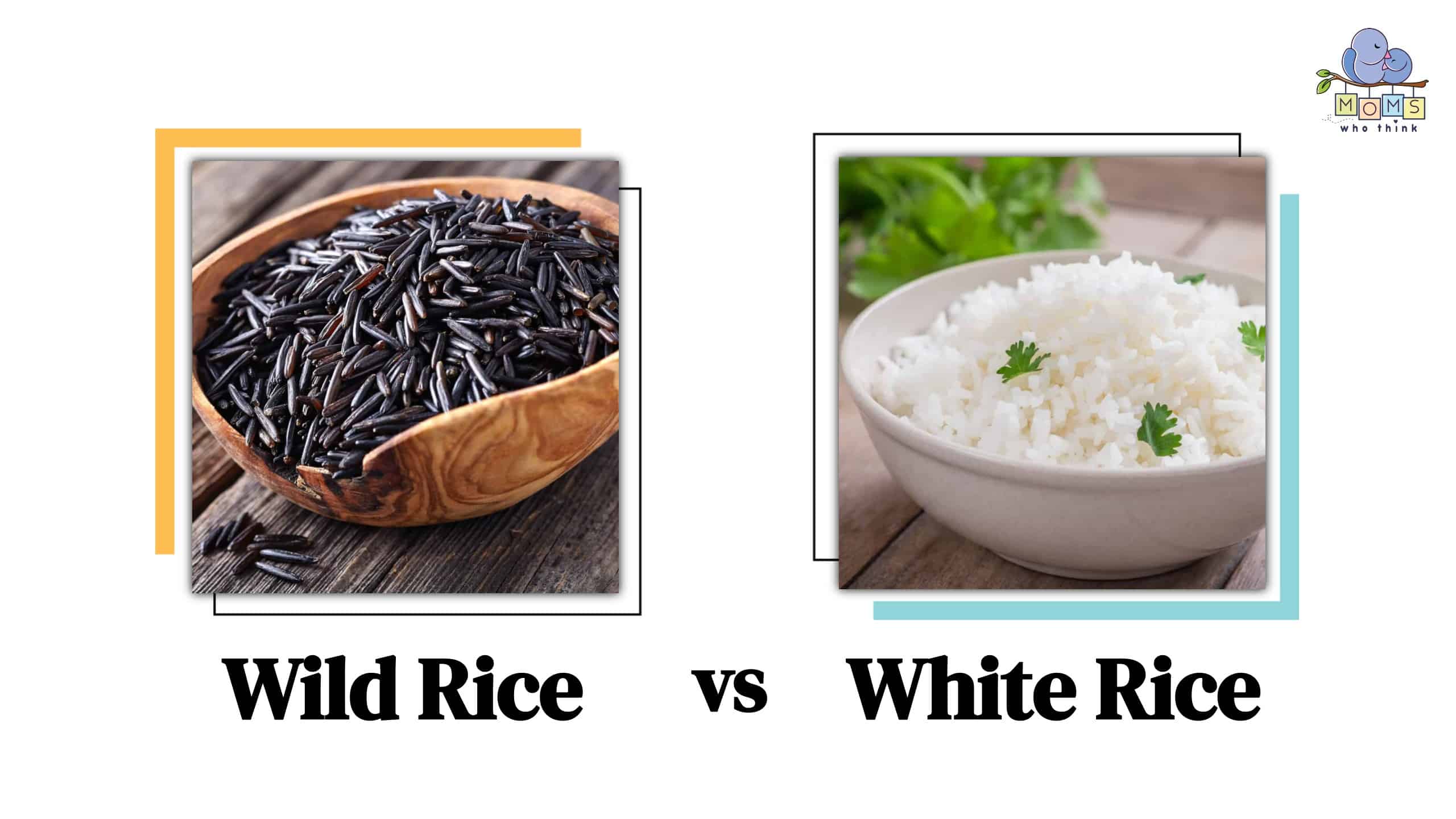Wild rice and white rice are two types of rice that couldn't be more different. The former is a more exotic type of rice, while the latter is your basic rice found in every supermarket. Wild rice breaks all of the rules and isn't actually even rice. Instead it's a long grass that grows in a similar way as rice. While white rice is the standard go-to rice for many home cooks, it's inexpensive and widely available. These two types of rice have more differences than similarities and differ in flavor, texture, cooking time, and nutritional value. Let's further explore the distinctions between wild rice and white rice.
Wild Rice vs. White Rice: Nutritional Differences
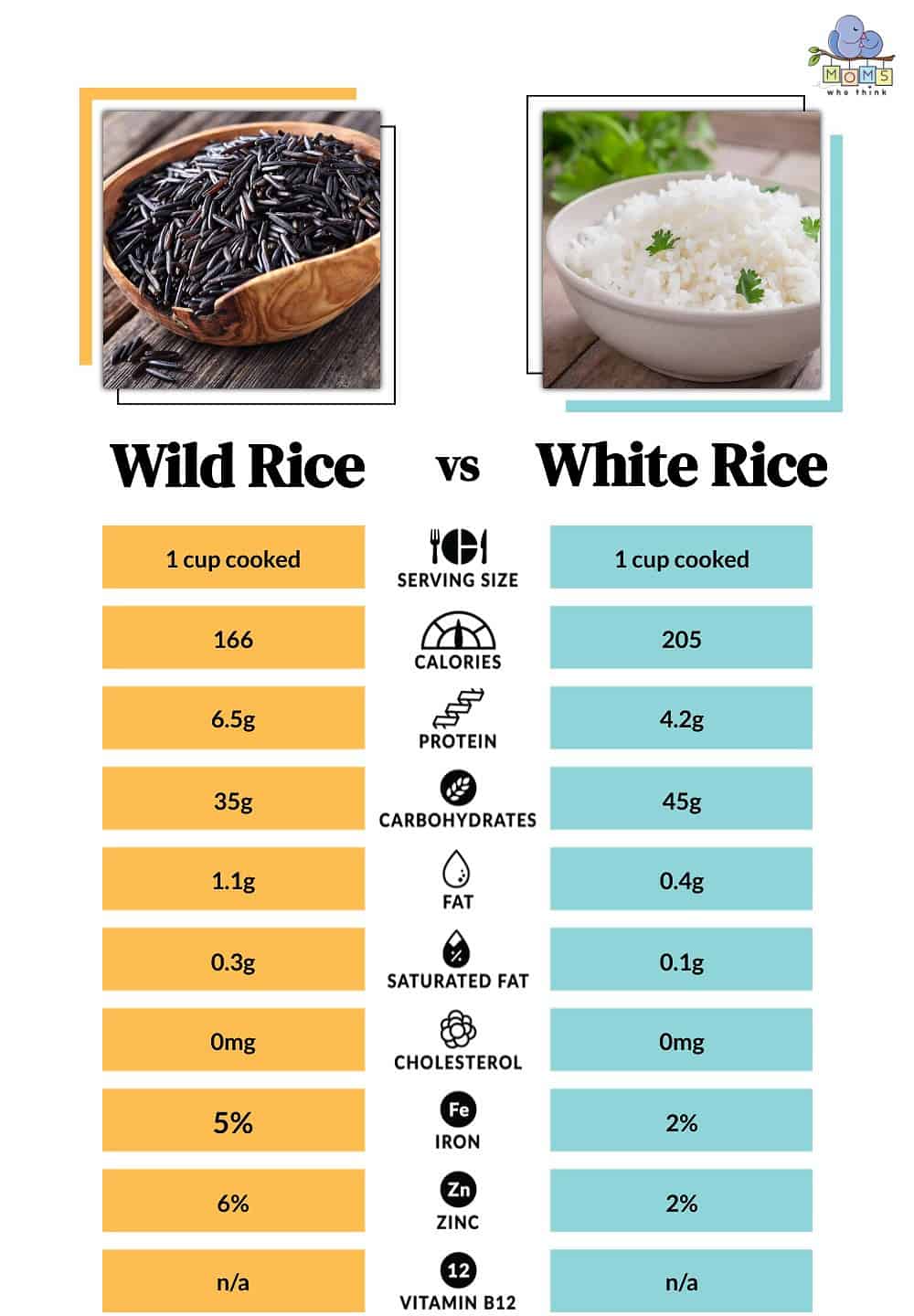
©
Wild rice and white rice are not nutritionally the same. They differ in calories, protein, and carbohydrate content. For instance, a cup of wild rice has 166 calories, and the same amount of white rice has 205 calories. When it comes to protein, wild rice has 6.5 grams, while white rice has 4.2 grams, so it's not a huge difference, but there is still a difference. And when we look at the carb count for each, there is a bigger difference with wild rice at 35 grams of carbs and white rice at 45 grams of carbs. Both kinds of rice have minimal fat and saturated fat. If we take a look at iron and zinc, wild rice has more iron with 5% than white rice with 2%, and wild rice has more zinc than white with 6% and white with only 2%.
So, what do all those numbers really mean? Well, they mean that both wild rice and white rice are a healthy addition to your weekly menu. But wild rice has a few advantages over white rice. According to Healthline, wild rice is a complete plant-based protein, which means it has all nine essential amino acids. Wild rice is rich in antioxidants, which are connected to all sorts of good things for your body, like boosting the immune system, supporting brain and heart function, and reducing visible effects of aging like wrinkles and dry skin. Unfortunately, white rice can’t boast these same qualities. But white rice still has some good qualities as it is usually enriched with added nutrients. Unfortunately, white rice is often given a bad rap and considered empty calories or empty carbs.
Wild Rice vs. White Rice: Gluten
All rice is gluten-free, but there is a caveat to that when it comes to wild rice. Wild rice is often sold packaged with spice mixes, and those are not always gluten-free. Always read labels carefully to make sure the rice you buy is gluten-free. Gluten-free folks may want to avoid buying both wild and white rice in the bulk bins because the chance for cross-contamination is high. Often, the bulk bin area isn't cleaned as often as it should be, and sometimes, other shoppers leave out scoopers or reuse scoopers.
What Is Wild Rice?
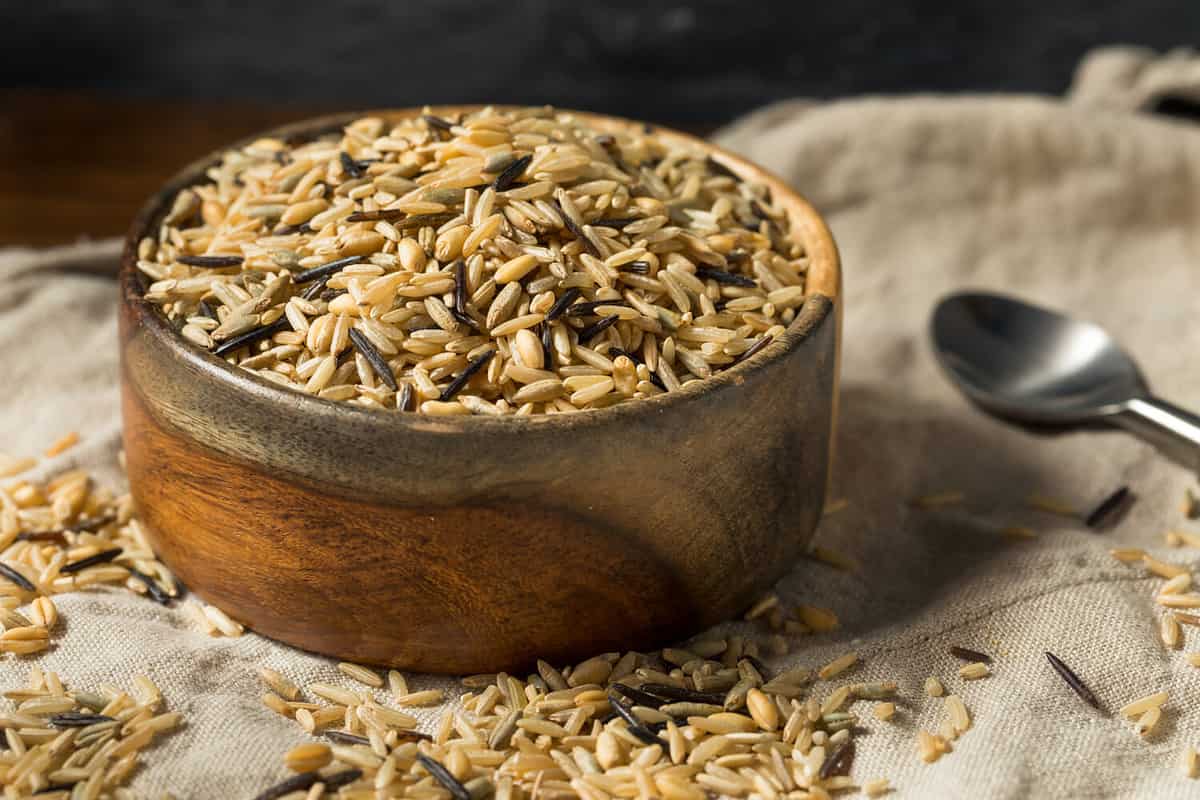
©Brent Hofacker/Shutterstock.com
Wild rice may seem like a newcomer to the food scene, and for a long time, it was only available in health food stores. These days, you can find wild rice everywhere. The name is a bit of a misnomer since wild rice is cultivated and not actually wild. It is seeds from tall aquatic grasses that resemble rice, but it isn't really rice at all. If you have seen wild rice, you know that the mixes never look the same.
Wild rice comes from a mix of four different species of plants. Three species of wild rice are native to North America. One grows near the Great Lakes, another is native to central Texas, and the third is mostly found in the Atlantic and Gulf coastal region—the fourth species of wild rice is native to Asia.
When you buy wild rice, it may be a mix of all four or just three. Sometimes wild rice is mixed with long-grain black rice, too. Some wild rice mixes have white rice mixed in for texture. So, in that sense, wild rice is a bit of a wild card because it's difficult to always know which combination, especially if you are buying from the bulk bins.
What Is White Rice?
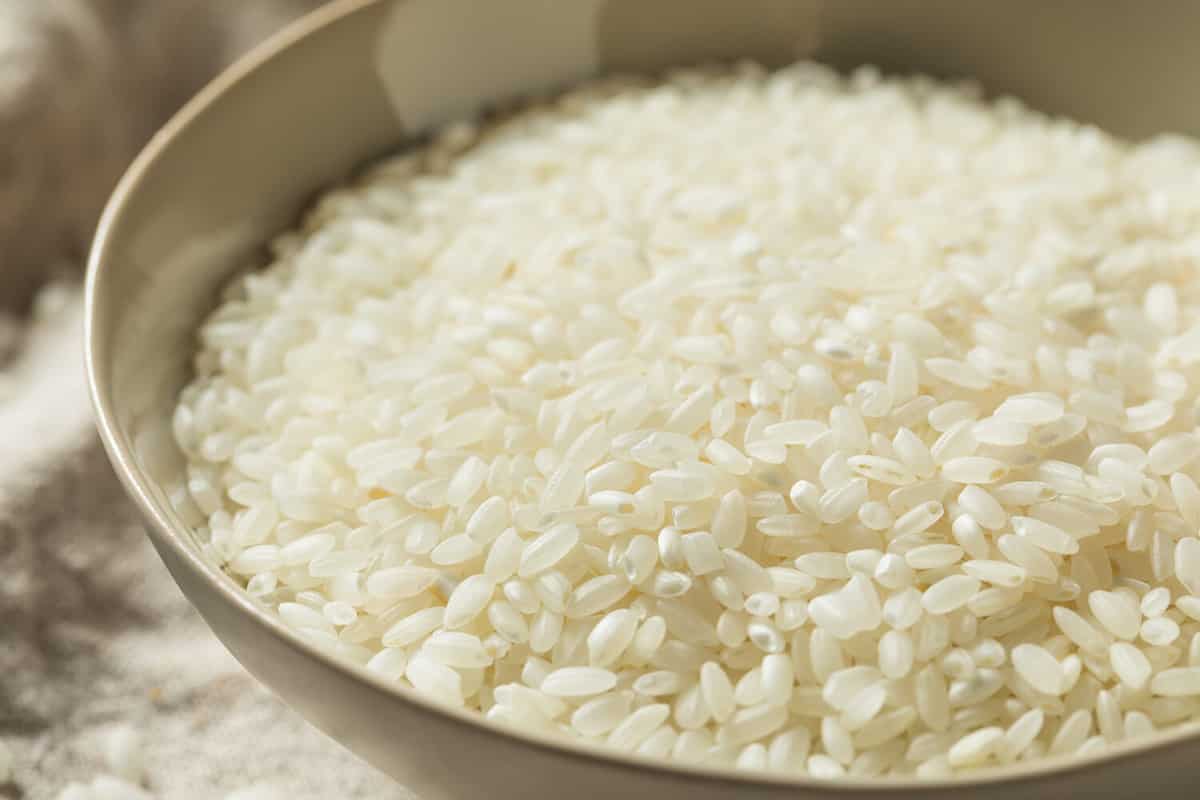
©Brent Hofacker/Shutterstock.com
White rice is similar to brown rice, but it doesn't have the husk, bran, or germ; they are removed during the processing. The rice is then polished, and that is what gives it the white color. During the processing of white rice, it loses some of its nutrients; luckily, the white rice you find in stores has been enriched to give it some nutritional value. Brown rice is considered healthier because it is minimally processed and has extra fiber, but white rice is often preferred over brown rice for texture and taste.
When we talk about white rice, it is kind of an umbrella term used for many types of white rice. The first thing that sets different types of white rice apart is the length. There is long-grain, short-grain, and medium-grain rice. Short-grain white rice is mostly used in sushi, and long-grain white rice is popular in dishes like pilaf and dirty rice.
Under the different sizes, you have a variety of rice like basmati, jasmine, arborio, Valencia, and sticky. While all of these types of rice fall under the general category of white rice, they aren't necessarily interchangeable. For example, basmati rice is common in Indian dishes. As it cooks, it gets a fluffy texture and is often served in pilafs. Jasmine rice is a long, grain, fragrant rice popular in Southeast Asian cooking. It's often paired with curry and stir fry. Valencia rice is a medium-grain white rice from Spain and is often used in Spanish dishes like paella. Arborio rice is a short-grain Italian rice most commonly used in risotto. Sticky rice is a high-gluten rice that is often paired with coconut milk or used in desserts.
How To Cook Wild Rice
You can cook wild rice on the stovetop or in the rice cooker. On the stovetop, the water-to-rice ratio is 3:1. And in the rice cooker, the water-to-rice ratio is 2:1. Before you start cooking wild rice, you should rinse it. You don't need to soak wild rice before cooking it, but you can. The only benefit that comes from soaking is that it cuts down on the cooking time.
There are two ways to make wild rice on the stovetop. Simply put three cups of water or broth in a pot to boil, then add in one cup of wild rice, cover it, and bring it to a simmer. Or you can saute wild rice with butter, oil, or ghee for a few minutes to toast the grains, then add the water and let it simmer covered. Both of these methods take close to an hour to finish cooking. In the rice cooker, just add the rice and cooking liquid and set it. It takes between 45 minutes and an hour to cook, depending on the type of rice cooker you use.
What To Serve With Wild Rice
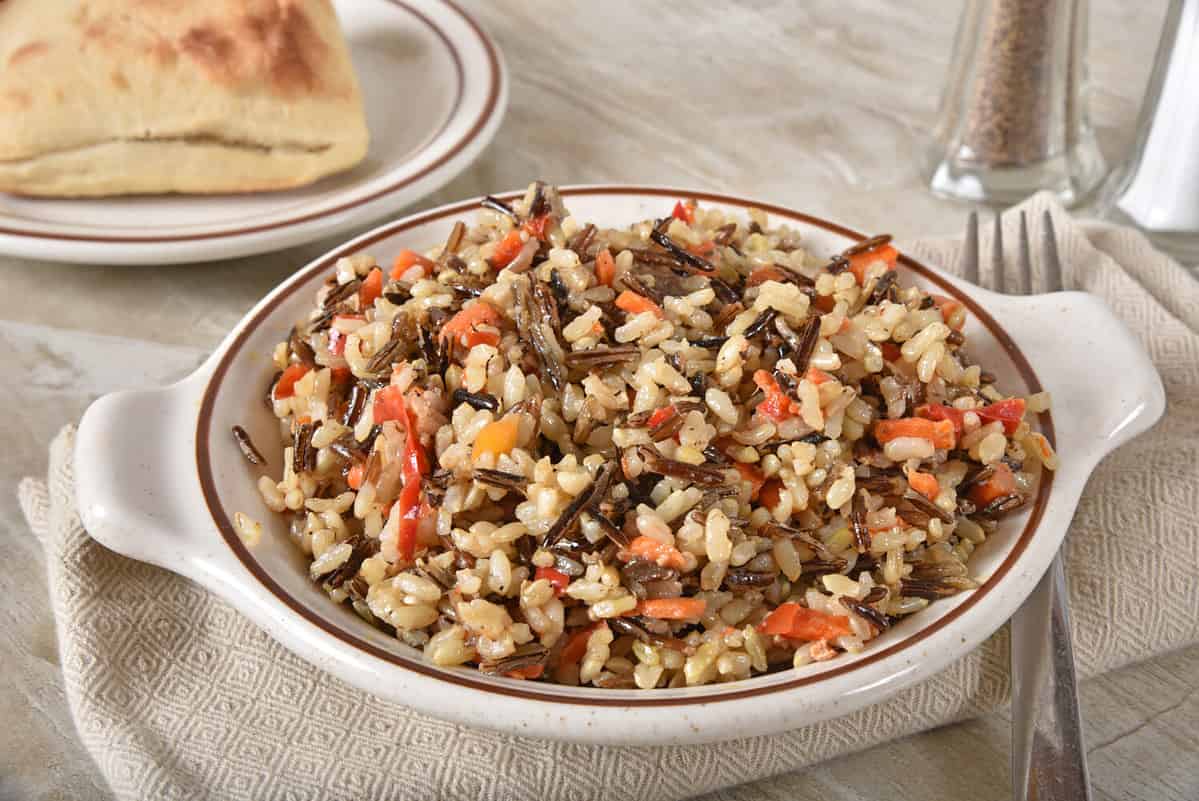
©MSPhotographic/Shutterstock.com
Wild rice really does break all of the rules; it can be a stand-alone dish or mixed with veggies and protein. You can mix it into casseroles like wild rice stuffing or wild rice seafood casserole. It's great in soups and stews because it adds texture and bite. It also works in stuffed Bell peppers or squash boats. Or you can sprinkle it on salads for extra fiber. It is a wild card indeed; with so many ways to use this earthy-tasting rice, you will definitely find a recipe that your whole family will love.
How to Cook White Rice
The standard ratio to cook white rice is one cup of rice to two cups of cooking liquid. White rice is best cooked on the stove or in the rice cooker and takes between fifteen and twenty minutes. Start by rinsing the rice, then either toast it on the stove with butter, oil, or ghee and when it is pale yellow or tan, add the cooking liquid and cover. Once the time is up, let the white rice sit for ten minutes, then fluff it with a fork. Fluffing the rice just means using a fork to separate the rice. The rice cooker is slightly easier with a set-it-and-forget-it method
How to Cook Rice with the Pasta Method
Wild rice and white rice can also be cooked with the pasta method. This is a good option if you are cooking a large batch of rice. Take a large pot and fill it with water; no need to measure. Then, bring it to a boil and add the rice. Turn it down to a simmer and cook for the right amount of time, then drain and fluff and serve.
Common Mistakes Cooking Rice
- Taking the lid off and checking too much. Once the lid is on, you need to walk away and let it cook. Opening the lid loses heat and moisture. And never stir the rice while it's cooking; this leads to the dreaded gummy rice.
- Using just plain water. Cook your rice in chicken or vegetable broth, and always add salt; it just makes everything better.
- Making too much or too little. One cup of uncooked rice yields three cups of cooked rice.
What to Serve with White Rice
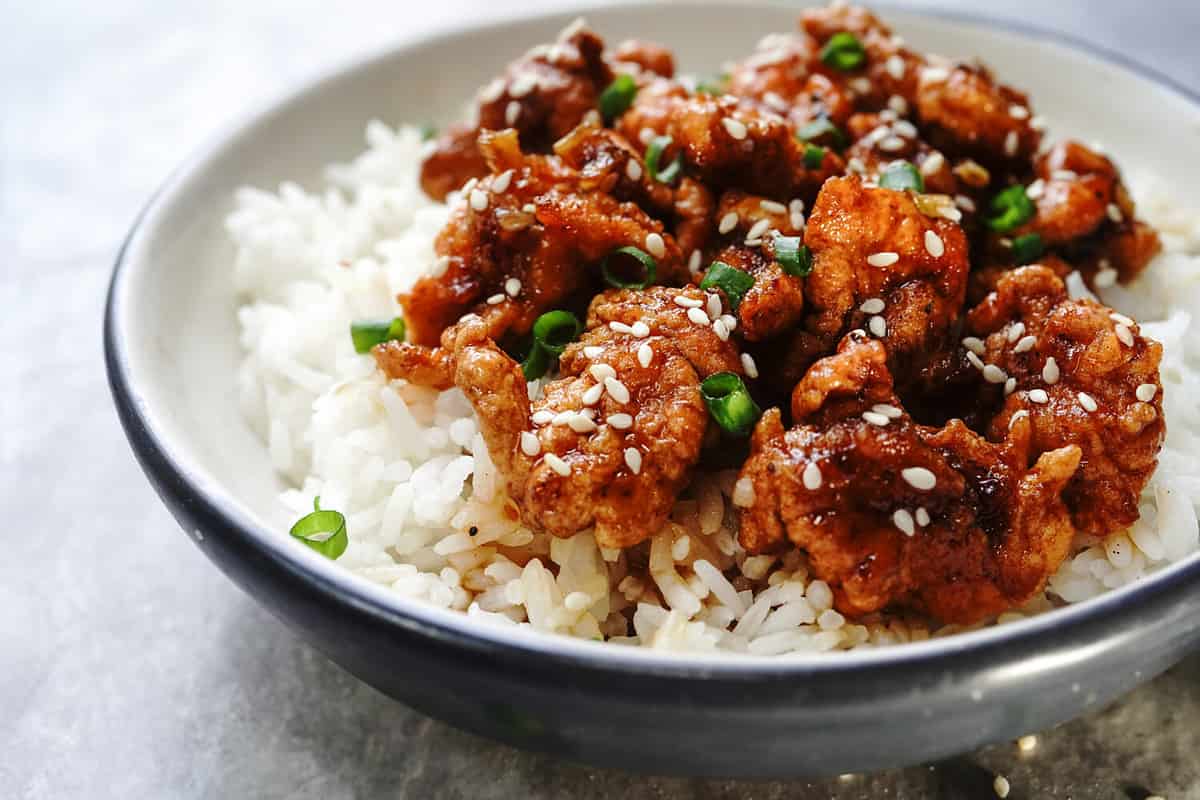
©vm2002/Shutterstock.com
White rice isn't as interesting as wild rice, but its classic texture and neutral flavor make it a popular rice. You can serve it with stir-fry, risotto, or as a side dish. White rice pairs well with beef, chicken, fish, and seafood. It's also perfect for vegans and vegetarians, as there is no vegetable that can't be paired with rice. White rice is a blank canvas that can be transformed with the right amount of seasonings and spices. Rice is a dish that everyone should master.
Print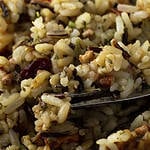
Healthy Wild Rice Stuffing
- Total Time: 1 hour
Ingredients
- 4 slices turkey bacon cut into 1-inch pieces
- 1 cup onion chopped
- 1 cup celery chopped
- 1/2 pound mushrooms sliced
- 1 package (4 ounces) wild rice cooked according to package directions
- 2 cups bread crumbs
- 1/2 pound turkey breakfast sausage, cooked
- 1 teaspoon dried oregano
- 1/2 teaspoon dried sage
- Salt
- Pepper
Instructions
- Preheat oven to 325°F.
- In a medium-sized skillet, over medium heat, sauté bacon until almost crisp.
- Add onion, celery, and mushrooms; continue cooking until vegetables are tender.
- In a large bowl combine bacon mixture, wild rice, bread crumbs, sausage, oregano, and sage. Season to taste with salt and pepper if desired.
- Spoon stuffing into a lightly greased 2-quart casserole dish.
- Cover and bake for 35 to 40 minutes.
- Prep Time: 20 minutes
- Cook Time: 40 minutes
